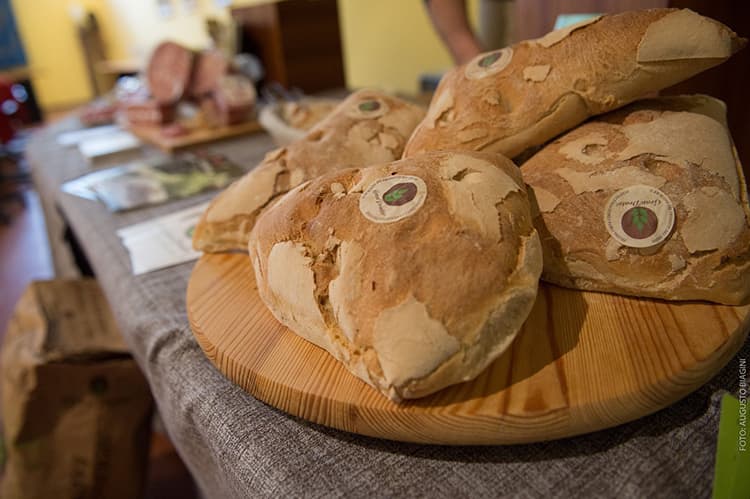The mills of Prato and their ancient grains
The tradition of the Prato ‘bozza’ loaf and other bakery products
.jpg)
Not everyone knows that... the city of Prato stands in the middle of a valley and has developed along the banks of the Bisenzio river. (the Bisenzio rises in the Tuscan-Emilian Apennines and flows into the Arno river after a 47 km journey). The water of this river has played a very important part in the history and development of Prato; it was made to flow into various canals that crossed the whole city.
The water of the river was used to move the blades of multiple mills (in the mid-1800s there were still 15 in the area of Serraglio alone) which with their millstones made a simple but excellent flour from the ancient grains.
The mills and the miller's work represented for many centuries the synthesis of the economic life of our territory and later were the driving force of the first textile settlements (the fullers), progenitors of modern industries. But this is another story...

Nowadays, the ancient grains, which used to be grown in most of the fields of the Prato province, have been rediscovered... and the bakeries that use these special flours can adorn their loaves of bread with a special stamp (the Gran Prato), like they used to do in the past, when those who produced bread had to declare the quantity, the weights and brand their bread with a special seal. Furthermore, the Prato “Bozza” loaf has been well-known outside the city walls since the Middle Ages.

In the 19th century, Antonio Mattei sent the bread produced in his bakery to Florence and Grandfather Ernesto Pandolfini still refered to the sale of bread to Florentine shops in the 1920s and 1930s. The "Cantuccio" of Prato is closely linked to the tradition of bread, the one flavored with anise and forerunner of what we now call "cantuccio" and which is in fact a very different recipe: i.e. Bread Dough (Flour, water, yeast, salt ) with the addition of very little sugar and anise. It’s a sort of large slice of toasted bread, still produced in our factory today and on sale in the Antonio Mattei biscuit factory shops in Prato and Florence.
.jpg)
We recommend eating them slightly warm (heated in the oven or toaster) and simply seasoned with oil, salt and pepper, but they also lend themselves to pairings with soft cheeses and Parma ham, a real delight with ancient and authentic flavors to try if you have the opportunity to drop in to our stores!